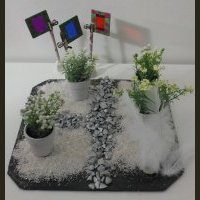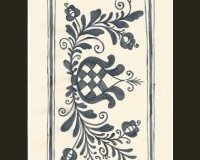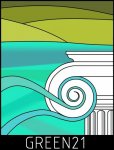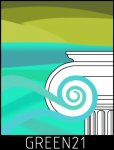accueil site > Paysage et patrimoine > 01. Teaching materials > 04. High School > Realizing a logo for the project
- 01. Fiches pédagogiques
- 01. Teaching materials
-
02. Jardin sans frontière : une école pour développer les compétences -clés en Europe
- 04. Partenaires
- 05. Rencontres transnationales
- 14. À l’école du jardin. Mobilités de formation dans les jardins d’Europe
- 15. À l’école européenne du jardin. Paroles de formateurs sur leurs formations "entre pairs"
- 16. A l’école auropéenne du jardin. Paroles d’apprenants sur leurs mobilités Erasmus+
- 19. Petit glossaire "européen" du jardin
- 20. Dissémination
- 21. Exploitation locale du projet
- 03. Un nouvel Erasmus+ : Le bleu européen comme étendard contre l’exclusion des adultes
-
09. Erasmus+ partenariato
-
Cammini del Blu in Europa
- 01. Incontri transnazionali
- 05. Progetti blu di partners
- 10. Percorsi europei del Blu
- 20. Storie blu
- 40. Disseminazione
- 43. Transcultural Carpet Blue
- 45. Missive blu
- 46. Glossario blu
- 47. Schede didattiche "Pedagogia del colore blu in Europa"
- 48. Illustrazioni delle schede didattiche : Mostra delle opere degli studenti
-
Giardino senza frontiere. Una scuola per lo slivuppo di competenze chiave in Europa
- 04. Partners
- 05. Riunioni transnazionali
- 14. Alla scuola del giardino. Mobilità di formazione nei giardini d’Europa
- 15. Alla scuola del Giardino. Parole di formatori sul loro addestramento "tra pari"
- 16. Alla scuola del giardino. Parole dei discenti sul loro Erasmus + Mobilità
- 19. Piccolo glossario europeo del giardino
-
Cammini del Blu in Europa
-
11. Erasmus+ Partnership
- 01. Transnational Meetings
- 05. Blue Projects of partners
- 07. European roads of the Blue
- 10. Blue stories
- 40. Dissemination
- 43. Transcultural Carpet Blue
- 45. Blue Missives
- 46. Blue Glossary
- 48. Roads of the blue : the file
- 50. Illustrations of the pedagogic file : exhibition of works of learners
-
51. Garden Without Borders : A School for Developing Key Competences in Europe
- 04. Partners
- 05. Transnational meetings
- 14. At Garden School. Training mobilities in the gardens of Europe
- 15. At Garden School. Words of trainers on their "peer-to-peer" training
- 16. At Garden School. Learners’ words about their mobility Erasmus +
- 19. Small European glossary of the garden
- 20. Dissemination
-
11. Partenariats Erasmus+
-
01. Les chemins du bleu en Europe
- 01. Rencontres transnationales
- 05. Projets bleus des partenaires
- 10. Routes du Bleu en Europe ...
- 20. Histoires Bleues
- 40. Dissémination
- 43. Transcultural Carpet Blue
- 45. Missives bleues
- 46. Glossaire bleu
- 47. Formation pédagogique : fiches pédagogiques et référentiel de compétences clés et transversales
- 50. Illustrations des fiches pédagogiques : exposition des travaux des apprenants
-
01. Les chemins du bleu en Europe
- 12. Pedagogic tools
- 17. Fiches pédagogiques
- 17. Schede Pedagogiche
Paysage et patrimoine
Realizing a logo for the project samedi 21 janvier 2012
 PROJECT
PROJECT
Realizing a Logo on landscape is an important experience since different issues need to be considered :
![]() The meaning of ‘landscape’ in today’s culture
The meaning of ‘landscape’ in today’s culture
![]() Methods of approaching the theme as related to the final object : the Logo as a formal identification of a specific environmental situation
Methods of approaching the theme as related to the final object : the Logo as a formal identification of a specific environmental situation
![]() Use, peculiar characters of the graphic study, ultimate possibility to be employed in the economic sector : travel/tourist agencies, associations, advertising campaigns, etc.
Use, peculiar characters of the graphic study, ultimate possibility to be employed in the economic sector : travel/tourist agencies, associations, advertising campaigns, etc.
Our schools, Liceo Scientifico and High School of Art of Cortina d’Ampezzo and Mugla Güzel Santlar Ve Spor Lisesi. Mugla ,TK lie in a territory with a strong tourist vocation and the activities carried out – graphic and visual arts, wood carving, fabric decoration, scientific studies of the territorial formation, etc. always take into account the needs and requests of the territory.
A logo represents a product set in a specific reality. In our case it sums up the concept of Landscape and allows to ‘vehicle a message through different communicative channels’. In particular, a Logo about Landscape in our context might be strongly functional to tourism.
OBJECTIVES
![]() To apply and experiment a project planning methodology in the class curriculum as an exercise of visual and graphic education
To apply and experiment a project planning methodology in the class curriculum as an exercise of visual and graphic education
![]() To know the specific techno-graphic characteristics of a Logo
To know the specific techno-graphic characteristics of a Logo
![]() To use the specific instruments of the graphic language in a correct, proficient way
To use the specific instruments of the graphic language in a correct, proficient way
![]() To realize a graphic product that may cope with the market’s requirements.
To realize a graphic product that may cope with the market’s requirements.
COMPETENCES
![]() To be aware of the meaning of LOGO in the visual communication context
To be aware of the meaning of LOGO in the visual communication context
![]() To acquire a correct project planning methodology
To acquire a correct project planning methodology
![]() To be able to apply knowledge and methodology in the study of a Logo related to landscape and environment issues.
To be able to apply knowledge and methodology in the study of a Logo related to landscape and environment issues.
MATERIALS
![]() Material supports (paper, colours, drawing tools, ICT, etc.)
Material supports (paper, colours, drawing tools, ICT, etc.)
![]() Cultural supports : books, magazines, photos, archive documents, articles, paintings
Cultural supports : books, magazines, photos, archive documents, articles, paintings
DEVELOPMENT OF THE SEQUENCES
![]() Phase one
Phase one
Presentation of the project GREEN 21 : contents and objectives
Analysis of the meaning of LOGO (What is a Logo ? Concept of Logo and Brand)
Fundamental features of a Logo : originality, synthesis and flexibility
Lettering
Relationship between form and colour
Specific features of a logo as related to its use
Logo as a symbol of identity of a company
![]() OPERATIVE PHASES
OPERATIVE PHASES
Phase one
![]() Presentation of the subject
Presentation of the subject
![]() Class on what is meant by Logo
Class on what is meant by Logo
![]() In-depth on the concept of Landscape
In-depth on the concept of Landscape
![]() Analysis of the fundamental elements of a landscape in relation to its characterising aspects
Analysis of the fundamental elements of a landscape in relation to its characterising aspects
![]() Methods of approach to the first planning phase : brainstorming
Methods of approach to the first planning phase : brainstorming
![]() Individual and group work : cooperative learning
Individual and group work : cooperative learning
![]() Progressive preparation of the initial studies, sketches, graphic proposals analysed and critically debated.
Progressive preparation of the initial studies, sketches, graphic proposals analysed and critically debated.
Phase two
![]() From sketches to the realization of definitive graphic proposals : different hypotheses of solution
From sketches to the realization of definitive graphic proposals : different hypotheses of solution
![]() Chromatic studies on the basis of the same formal solution.
Chromatic studies on the basis of the same formal solution.
Phase three
![]() Sum up and realization of different patterns on the basis of the selection carried out during the second phase
Sum up and realization of different patterns on the basis of the selection carried out during the second phase
![]() Critical observations
Critical observations
Phase four
![]() Typo realization of the graphic cards
Typo realization of the graphic cards
![]() Debate and comparison around the outcome cards
Debate and comparison around the outcome cards
Phase five
A concourse between the schools :
![]() Polo Val Boite Cortina d’Ampezzo, IT
Polo Val Boite Cortina d’Ampezzo, IT
![]() Mugla Güzel Santlar Ve Spor Lisesi. TK
Mugla Güzel Santlar Ve Spor Lisesi. TK
ASSESSMENT/EVALUATION
Assessment is provided in three distinguished phases.
First phase
![]() Ongoing assessment and monitoring of the different phases of the project
Ongoing assessment and monitoring of the different phases of the project
![]() Assessment of the work progress in relation to the objectives
Assessment of the work progress in relation to the objectives
![]() Remedial intervention where necessary
Remedial intervention where necessary
Second phase
![]() Evaluation of the final result in relation to the objectives
Evaluation of the final result in relation to the objectives
![]() Assessment of the students’ learning level in relation to the subject proposed
Assessment of the students’ learning level in relation to the subject proposed
![]() Assessment of the students’ acquired knowledge and competences
Assessment of the students’ acquired knowledge and competences
Third phase
![]() Evaluation of the individual’s and group’s ability to carry on an assigned task
Evaluation of the individual’s and group’s ability to carry on an assigned task
![]() Evaluation of the interest and commitment in carrying out a concrete task based on a real request (realization of a product and its application in a real context)
Evaluation of the interest and commitment in carrying out a concrete task based on a real request (realization of a product and its application in a real context)
![]() Evaluation of the operative dynamics pursued individually and in group during the different project phases
Evaluation of the operative dynamics pursued individually and in group during the different project phases
![]() Evaluation of the ability of the individual or the group in presenting their own work
Evaluation of the ability of the individual or the group in presenting their own work
![]() Evaluation of the level of awareness acquired by the students at the end of their project work.
Evaluation of the level of awareness acquired by the students at the end of their project work.
![]() Lycée Polo Val Boite Cortina d’Ampezzo IT :
Lycée Polo Val Boite Cortina d’Ampezzo IT :
Marie Gino , Giuliana Corbatto, Antonio Ambrosino, Alessandro Barozzi.
![]() Lycée Güzel Santlar Ve Spor Lisesi Mugla, TK
Lycée Güzel Santlar Ve Spor Lisesi Mugla, TK
Recep Erdinc Ince, Mehmet Ozkaya,
Aydin Ugur Cakmak,
Ozkan Kaya. Fatma Sevim Kapiz


















 Version imprimable
Version imprimable










